
Review: Compelling Design Meets Imperfect Software

Review: Compelling Design Meets Imperfect Software
Key Takeaways
- Ugreen’s NASync hardware is excellent, but the UGOS operating system is in its infancy.
- Third-party app support (Docker, Plex, etc) wasn’t available at the time of this review’s publication.
- I’ll gladly recommend this product to enthusiasts, but not first-time NAS users.
Ugreen is shaking up the network-attached storage (NAS) market with NASync, a collection of attractive, powerful, and reasonably-priced home servers. I’ve spent about a month testing the two-bay NASync DXP2800, and while I’m impressed by the hardware, Ugreen’s ecosystem lacks the mature software experience that most customers need.
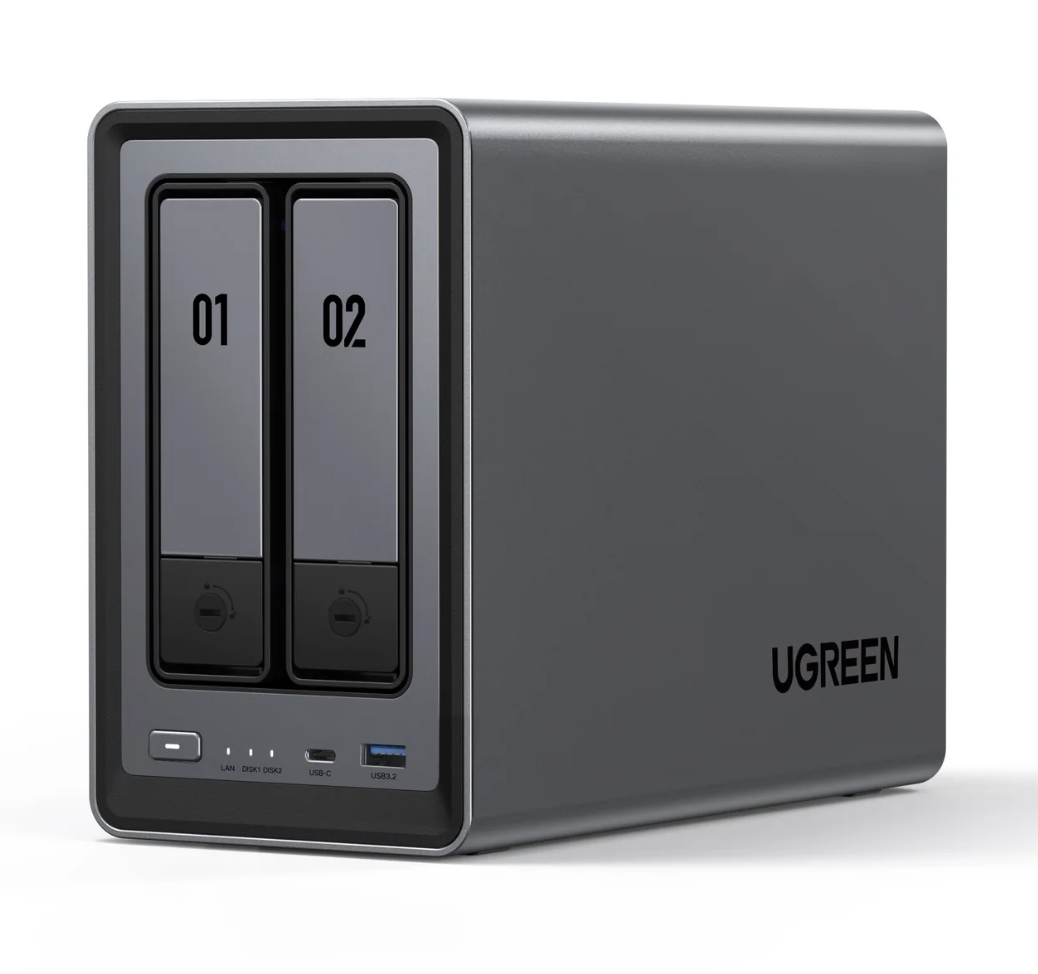
Ugreen NASync DXP2800
6/ 10
This cutting-edge network-attached storage device transforms how you store and access data via smartphones, laptops, tablets, and TVs anywhere with network access.
CPU
Intel 12th Gen N-Series
Memory
8GB (Upgradeable to 16GB)
Drive Bays
2 x 22TB
Ports
2.5GbE, USB-C, USB-A (x3)
Caching
Expandable up to 8TB
OS
UGOS
Dimensions
7 x 9 x 4 inches
Weight
3.5lbs
Pros
- Excellent hardware and a Plex-ready CPU
- Easily upgradeable RAM and cache
- Impressive mobile app with photo management features
- Two-year hardware warranty
Cons
- The Ugreen operating system needs a lot of work
- No third-party app support at the time of publication
- No PCIe upgradeability
Expand
See at Ugreen See at Kickstarter
The NASync DXP2800 was sent to me before Ugreen opened its Kickstarter campaign or began filling orders. Many of the complaints that I make in my review will (hopefully) be resolved by the company. So, I’ll try to keep this article up to date as Ugreen introduces new software improvements, though it may take several days or weeks for me to evaluate such improvements.
Impressive Hardware for the Price
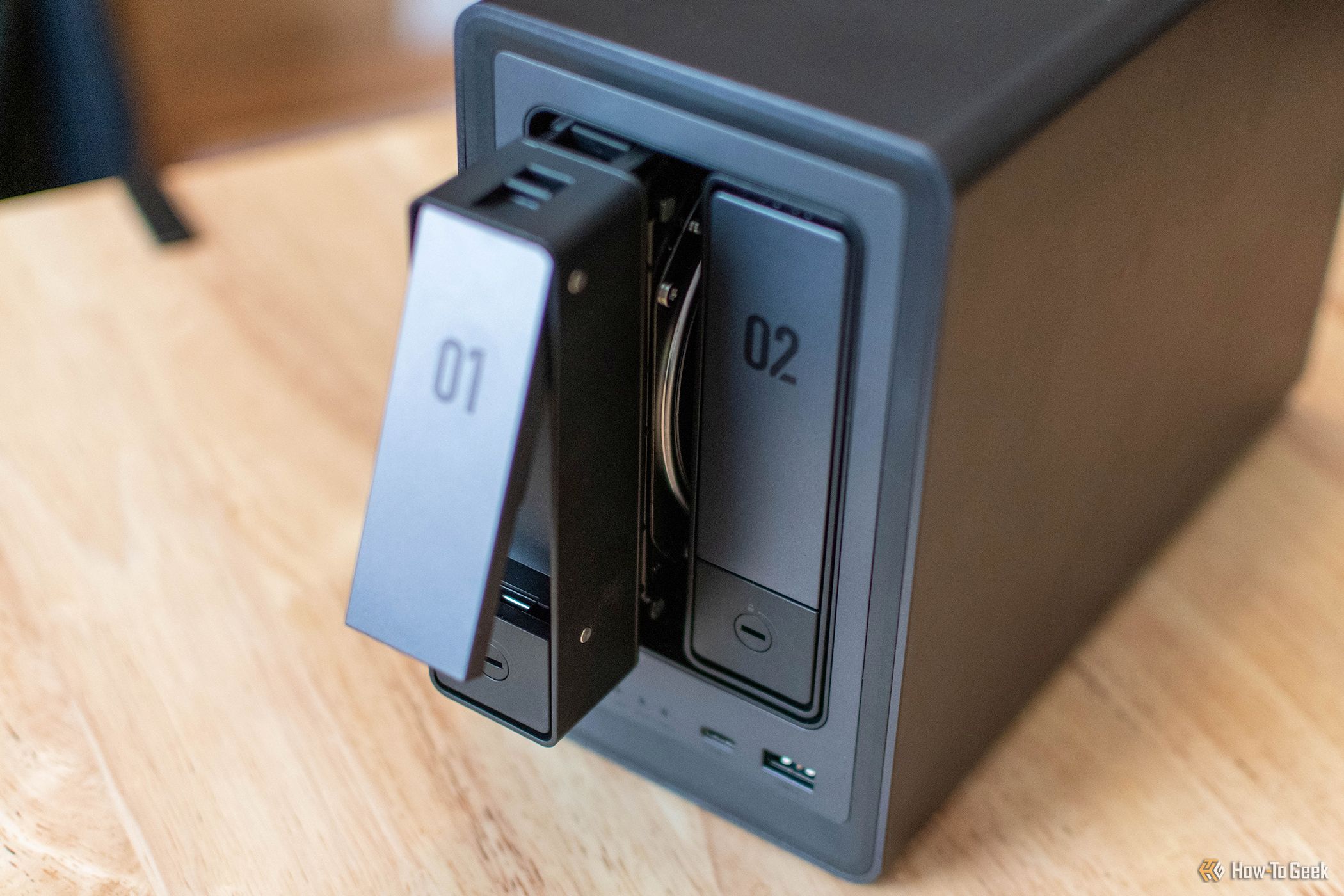
Andrew Heinzman / How-To Geek
If there’s one reason to buy the Ugreen NASync DXP2800, it’s the hardware. This is an incredibly well-made unit with a dense, premium build quality and a fantastic design. I love the port selection, I love the upgradeability, and I’m impressed by Ugreen’s attention to detail.
This two-bay NAS unit can accommodate up to 44TB of HDD storage, plus 8TB of solid-state storage (or cache) through a pair of hidden M.2 slots. All NASync devices use 12th Gen Intel processors, though the DXP2800 uses a respectable N Series CPU, rather than the Intel Core i5 processor that’s featured in the larger NASync devices.
Port-wise, the DXP2800 is loaded with goodness. The front panel has a USB-C and USB 3.0 port, while the rear contains an additional USB 3.0 port and a pair of USB 2.0 sockets. A 2.5 GbE jack is also located on the unit’s rear, plus an HDMI jack for direct media playback (or fiddling around with the BIOS). Note that the two-bay DXP2800 doesn’t offer Thunderbolt connectivity, and it doesn’t have the SD card slot that Ugreen includes in its larger NAS devices.
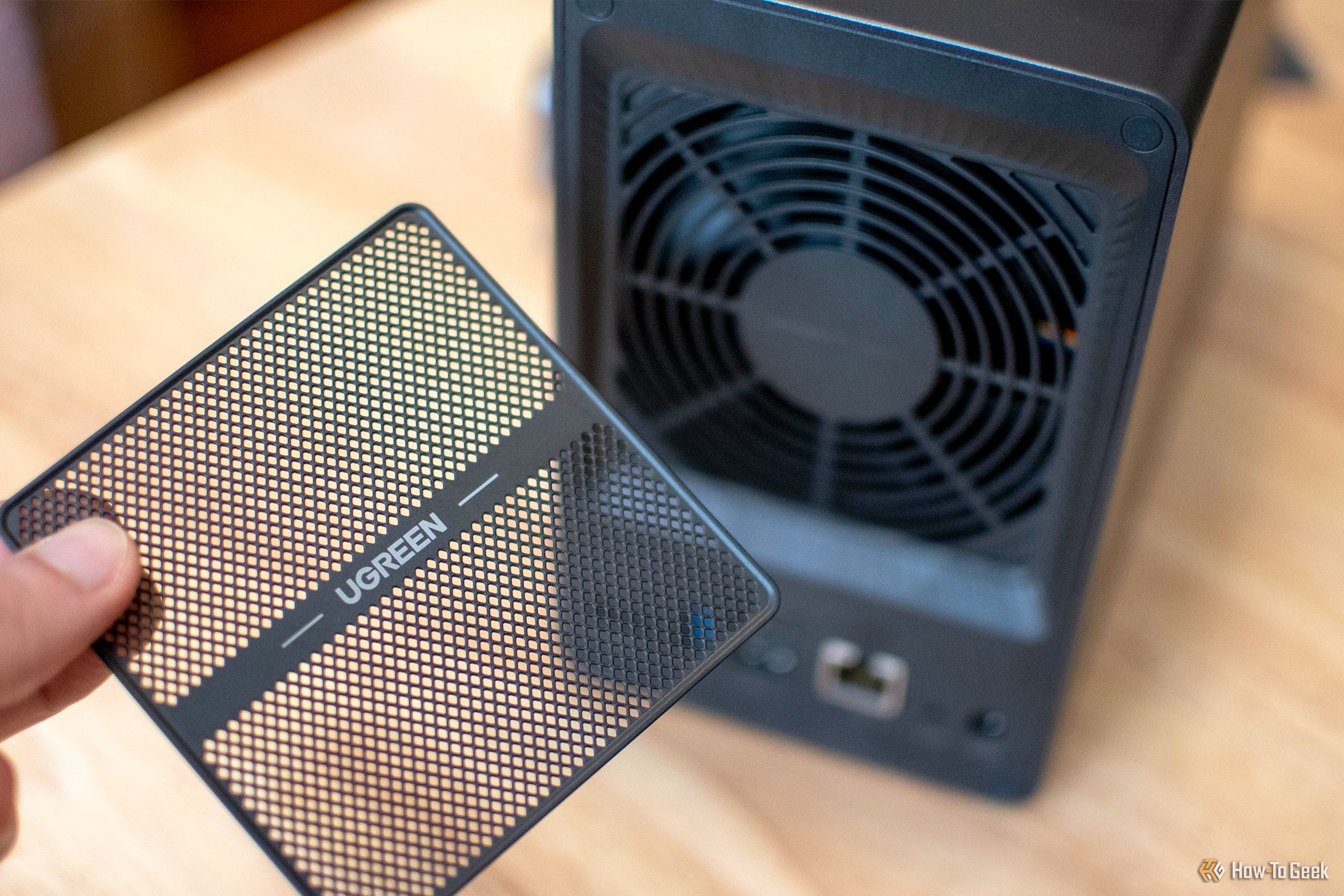
Andrew Heinzman / How-To Geek
Conveniently, Ugreen’s drive bays use a latching mechanism for screwless installation of 3.5-inch HDDs. You only need to use screws when installing 2.5-inch drives. Though I should note that the drive bays, relative to the rest of this machine, feel cheap and plasticky. The only silver lining, aside from the fancy latching mechanism, is that you can lock each drive bay in place with a key.
I’m more impressed by the NASync DXP2800’s cooling system. Ugreen is using an air intake, rather than an exhaust, to push cool air through the drive bays and out the front of the NAS enclosure. This seems to be a very effective cooling method, as the NAS doesn’t get very warm. A magnetic screen is included to keep dust bunnies and pet hair from getting sucked into the NAS.
The only concern I have in terms of hardware is power consumption. Ugreen says that the DXP2800 will fluctuate between 50 and 70 watts depending on its power state, which seems a bit excessive for a two-bay NAS device. I’d love to know if power consumption can be better optimized in software in the future. Also, while this has nothing to do with the amount of power the DXP2800 uses, I was surprised to see that this NAS runs on a third-party 9v power supply. I’m using a pre-release unit that was (presumably) used for testing or press events, so maybe it’s just a pre-release quirk.
Easy To Upgrade
Out of the box, the NASync DXP2800 has 8GB of built-in DDR4 memory, which may prove to be a limitation for some users. Thankfully, you can upgrade to 16GB of RAM, and the upgrade process is outrageously easy.
The DXP2800 comes with a small screwdriver that you can use to open a compartment on the unit’s bottom. This compartment hides a RAM module. To upgrade the RAM, take out the old module and put in a new one. The larger NASync devices have an additional RAM slot for up to 32GB of memory, in case you’re wondering.
Close
There’s also a pair of M.2 slots hidden inside of the NASync enclosure. These M.2 slots, which are unoccupied by default, may be utilized for 8TB of solid-state storage or cache. It’s a good option for those who run VMs or other (not yet available) applications on their NAS.
While the M.2 slots are fairly accessible, they’re in a bit of an odd spot—next to the drive bays. You have to remove both drive bays from the unit, peel a film off the M.2 slots, and insert your SSDs. This shouldn’t be a problem (unless you have big hands), though I should note that the larger NASync devices have their M.2 slots in the RAM compartment, which is a bit more convenient.
However, the NASync DXP2800 offers no form of PCIe upgradeability. If you were hoping to upgrade from 2.5 GbE to a 10 Gig connection, tough luck.
An Operating System in Its Infancy
The Debian-based Ugreen operating system, called UGOS, needs a lot of work. It currently lacks third-party app support, meaning that you can’t run Docker , Plex Media Server , or other home server applications. UGOS also lacks any hybrid RAID options, it doesn’t support cloud storage backups (to Dropbox, Google Drive, etc), and it doesn’t provide 2FA protection when remote access is enabled.
Despite these faults, UGOS is surprisingly polished for a brand-new operating system. It supports all the basic file transfer functionality that you’d expect from a NAS device, including DLNA streaming. And, unlike other reviewers, I haven’t experienced any problems with SMB.
The UGOS web interface and desktop app are attractive and easy to navigate, although I wish that the desktop app would remember my login details (or the NAS device’s IP address, at least). And I was shocked to learn that the UGOS mobile app is a fully-featured piece of software, rather than a simple web wrapper.
Close
Ugreen also provides some interesting file and photo features, such as a universal file search tool and automatic smartphone photo backups. There’s even a Google Photos-like image gallery in the UGOS mobile app. I had some trouble getting mobile uploads to appear in the gallery, and UGOS initially organized my photos by upload date (rather than shooting date), though these problems vanished after a few days.
I should reiterate that UGOS is based on Debian. Third-party app support should be a relatively simple affair. Ugreen tells me that Docker support is planned for May 2024. You can run third-party apps in Docker containers, so this should hold people over as UGOS slowly expands its app support.
If you’re desperate enough, you can boot a more mature operating system on this machine. From what I’ve seen, German tech reviewer, The Geek Freaks , says that Unraid works great, and a handful of reviewers have flashed TrueNAS . Unfortunately, flashing an alternate OS can be a time-consuming process, as you need to open up the entire machine (it’s easier to open a TerraMaster NAS, in my experience), disable a Watch Dog in BIOs, and jump through some other hoops.
Flashing an alternate OS will have no impact on the NASync hardware warranty. This has been confirmed to me by Ugreen, though it’s also mentioned in the NASync Kickstarter listing. However, the company suggests that people stick with UGOS. I have intentionally refrained from using Unraid or TrueNAS during my review process, but I will begin testing alternate operating systems after this review is published.
Security Concerns
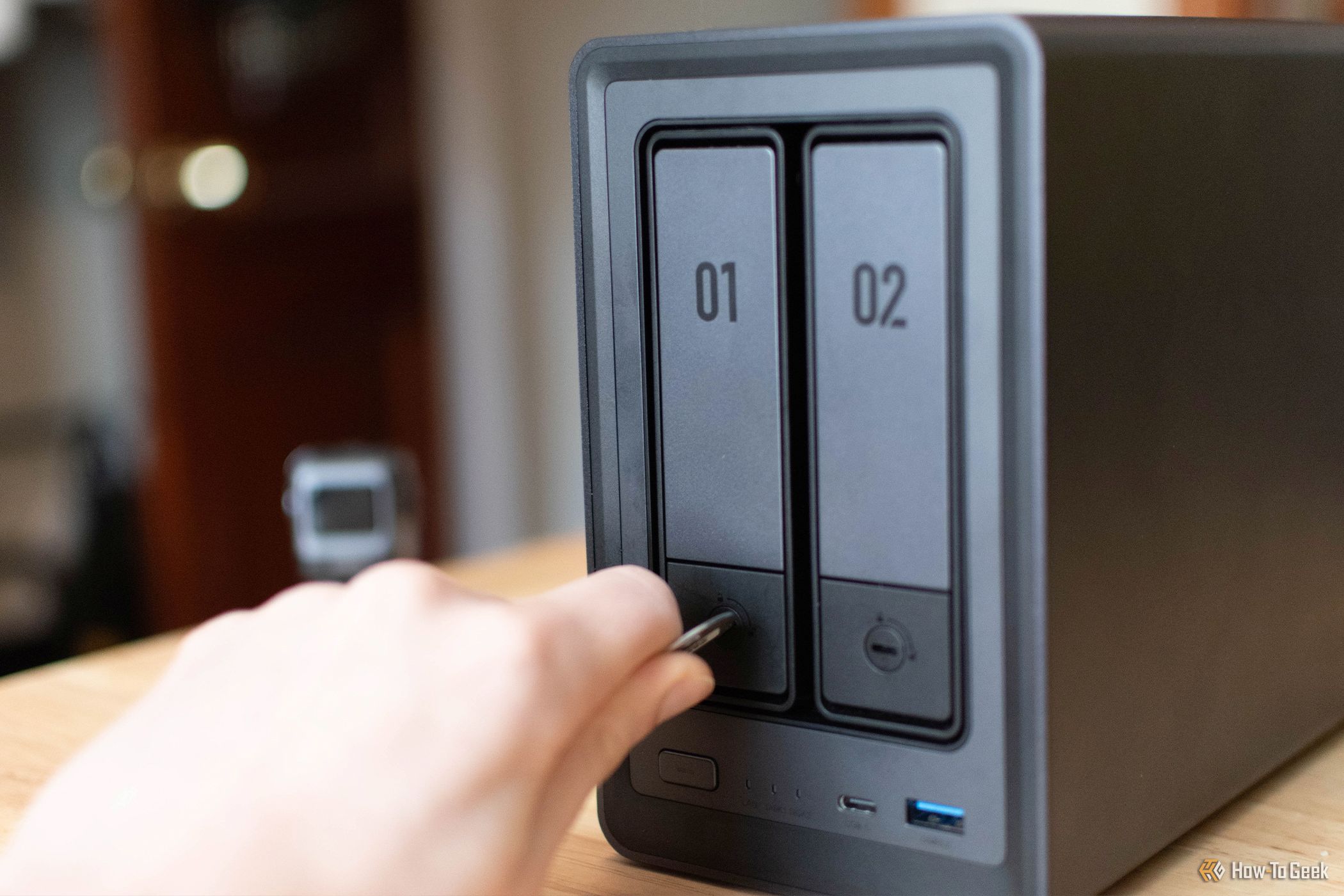
Andrew Heinzman / How-To Geek
I first encountered Ugreen’s NASync lineup at CES 2024 . And, like many other attendees, I was impressed to learn that a company known for phone and laptop accessories could make such a compelling shift into the NAS market.
However, I’ve seen several well-known NAS brands fall victim to vulnerabilities and ransomware attacks. To me, the idea of a custom Ugreen-made operating system is a red flag. Until this operating system has a proven track record, I will be concerned about user security, and I would suggest that UGOS users leave remote access disabled.
NAS devices contain valuable data and tend to be poorly secured. So, they’re a common target for malware and hackers. Users are responsible for implementing security features, firewalls, and regular firmware updates. But protective features and patches must be provided by the manufacturer. And even when adequate security tools are provided, there may be underlying vulnerabilities within the operating system.
For its part, Ugreen says that user security is a top priority. I’m also glad to see advanced security features, such as a firewall and malware-detection app, in UGOS. But I can’t attest to the strength of these features, and I’m disappointed to see that Ugreen’s account system lacks 2FA.
If security experts vouch for UGOS, or if the UGOS operating system goes a few years without any security incidents, I’ll adjust my opinion. For now, I’m erring on the side of caution and gut feeling.
Should You Buy the Ugreen NASync DXP2800?
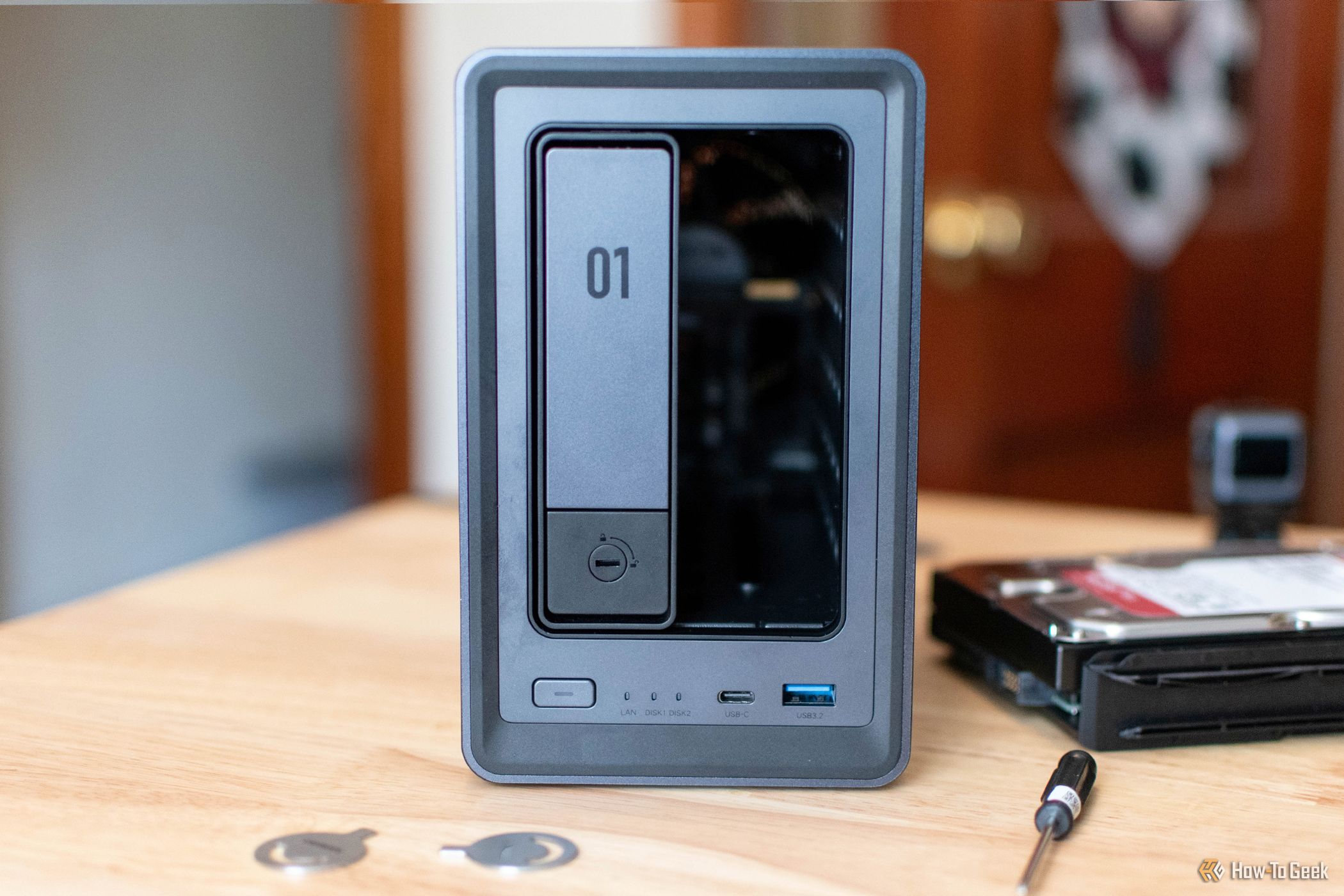
Andrew Heinzman / How-To Geek
As of April 2024, I feel that Ugreen’s NASync devices are mainly for the enthusiast crowd. If you’ve never set up a home server, or if you want to access advanced NAS functionality without flashing an alternate OS, you should probably buy a NAS from a more established brand.
My feelings may change as Ugreen introduces third-party app support. Docker is planned for May 2024, which is when early customers will begin receiving their NASync orders. Still, I’ll be concerned about software security for some time. Ugreen is new to this space, so it has to prove itself. There’s a lot of potential here. NASync could become a compelling product if the company manages to build a good, powerful, and secure software platform.

Ugreen NASync DXP2800
6/ 10
This cutting-edge network-attached storage device transforms how you store and access data via smartphones, laptops, tablets, and TVs anywhere with network access.
See at Ugreen See at Kickstarter
Also read:
- [New] 2024 Approved Essential Tips for Monitoring Facebook Live Streams
- [New] In 2024, Strategy Supreme The Top 7 Battlefield Commanders
- [New] PhaseCope Pro Top Lightroom Replacements Unveiled
- [New] Tips on Filming with Drone for 2024
- [New] Top 7 Streaming Tools for Mac OS X for 2024
- [Updated] 2024 Approved Dimension Dilemma in Videos Insight Into iMovie Trimming
- [Updated] In 2024, Step-by-Step Editing iOS Ringtone Settings
- [Updated] Top Affordable Panoramic Cameras Under $100
- [Updated] Ultimate Enterprise Cloud Solutions
- 2024 Approved Live Stream Heroes Face Off – XSplit Vs. OBS Showcase
- Effortless Audio Integration for InShot Devices for 2024
- How to Use Google Assistant on Your Lock Screen Of Motorola Moto G Stylus (2023) Phone
- In 2024, Top 7 Skype Hacker to Hack Any Skype Account On your Motorola Edge+ (2023) | Dr.fone
- iPhone 15 Pro iCloud Activation Lock Bypass
- Leading the Charge in Mac/Win SRT Modifications
- Soul Contracts | Free Book
- Transforming MOVs to MP4/MKV on PC for 2024
- Title: Review: Compelling Design Meets Imperfect Software
- Author: Edward
- Created at : 2025-01-10 18:31:34
- Updated at : 2025-01-17 18:27:02
- Link: https://vp-tips.techidaily.com/review-compelling-design-meets-imperfect-software/
- License: This work is licensed under CC BY-NC-SA 4.0.